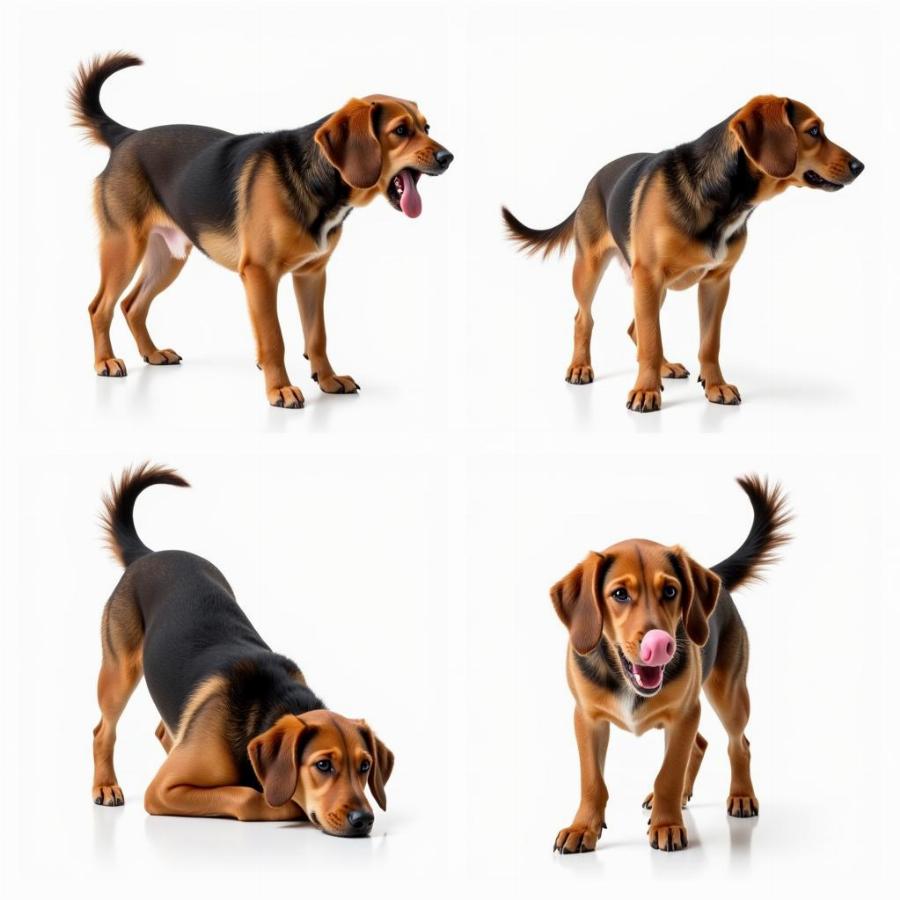The phrase “dog or not” might seem simple, but when it comes to understanding canine behavior, especially during play, it can unveil a wealth of information. Deciphering the nuances of dog play, including the signals they send and receive, is crucial for responsible pet ownership. This article delves into the intricacies of dog play, helping you understand what’s normal, what’s not, and how to ensure a safe and enriching environment for your furry friend.
Understanding whether your dog is genuinely playing or exhibiting other behaviors, such as aggression or fear, is paramount for their well-being and the safety of others. Misinterpreting signals can lead to unintended consequences, so let’s explore the fascinating world of canine communication through play.
The Language of Play: How Dogs Communicate
Dogs, unlike humans, rely heavily on body language to communicate. During play, this language becomes a dynamic dance of postures, vocalizations, and facial expressions. Recognizing these signals is key to understanding whether your dog is having fun or feeling threatened. A playful dog will often exhibit a loose, bouncy body posture, a playful bow (front legs extended, rear end up), and a relaxed, open-mouthed pant. Tail wags, while often associated with happiness, can also indicate excitement or even anxiety, so it’s important to consider the entire body language picture.
Play Bows: An Invitation to Fun
The play bow is perhaps the most universally recognized sign of playful intent in dogs. It’s a clear signal that says, “Everything that follows is just for fun!” This posture diffuses tension and encourages interaction. If you see your dog bowing to another dog, it’s a good sign they’re ready to engage in some friendly play.
Vocalizations: More Than Just Barks
While barking can sometimes indicate aggression, during play, it often takes on a higher pitch and more melodic tone. Playful barks are usually short and interspersed with panting. Growls, too, can be part of playful interaction, especially during mock fights or tug-of-war. These play growls are typically softer and less intense than aggressive growls.
Facial Expressions: A Window to Their Emotions
A relaxed, open mouth with a slightly lolling tongue is a common sign of a happy, playful dog. Avoidance of direct eye contact, along with soft eyes and relaxed facial muscles, further reinforces playful intent. Conversely, tense facial muscles, a hard stare, or a wrinkled muzzle could indicate stress or aggression.
Dog or Not: Differentiating Play from Aggression
The line between playful behavior and aggression can sometimes be blurry. Understanding the subtle differences is crucial. While play often involves mock biting and chasing, these actions should be reciprocal and accompanied by the playful signals discussed earlier. If one dog consistently seems to be on the receiving end of rough play, or if the interactions escalate into snarling, snapping, or pinning, it’s likely no longer just play.
When Play Turns Sour: Recognizing Signs of Trouble
It’s crucial to monitor dog play and intervene if necessary. Look for signs of stress, such as tucked tails, whale eyes (showing the whites of the eyes), lip licking, or attempts to escape. If you observe these signals, it’s time to separate the dogs and allow them to calm down.
 Recognizing Signs of Dog Play Aggression
Recognizing Signs of Dog Play Aggression
Creating a Safe and Enriching Play Environment
Providing a safe and stimulating play environment is essential for your dog’s physical and mental well-being. This includes choosing appropriate toys, supervising play sessions, and understanding your dog’s play style. Some dogs prefer gentle play, while others enjoy more rambunctious activities.
Choosing the Right Toys: Safety First
Durable, non-toxic toys are a must. Avoid toys that can be easily torn apart and swallowed, posing a choking hazard. Select toys that are appropriate for your dog’s size and breed.
Conclusion
Understanding the nuances of “dog or not” in the context of play is essential for responsible pet ownership. By learning to decode canine body language, you can ensure that playtime remains a positive and enriching experience for your furry companion. Remember to observe closely, supervise interactions, and intervene when necessary to maintain a safe and enjoyable environment for all.
FAQs
- How can I tell if my dog is playing or fighting? Look for play bows, relaxed body posture, and reciprocal actions. Aggression often involves tense body language, sustained growls, and one-sided attacks.
- What should I do if my dog is being too rough during play? Interrupt the play session and separate the dogs. Allow them to calm down before reintroducing them.
- Are all tail wags a sign of happiness? No. Tail wags can indicate a range of emotions, including excitement, anxiety, and even aggression. Consider the entire body language picture.
- How can I encourage appropriate play between dogs? Supervise play sessions, provide appropriate toys, and intervene if necessary.
- Is it normal for dogs to growl during play? Yes, soft, playful growls are common during mock fights or tug-of-war. However, monitor for signs of escalation.
Related Articles on Beaut Dogs
Beaut Dogs is your go-to resource for all things canine, offering expert advice and valuable insights into the world of dog breeds, care, and training. For personalized guidance and support, don’t hesitate to reach out to us via Email: [email protected]. We are here to help you provide the best possible care for your beloved companion.